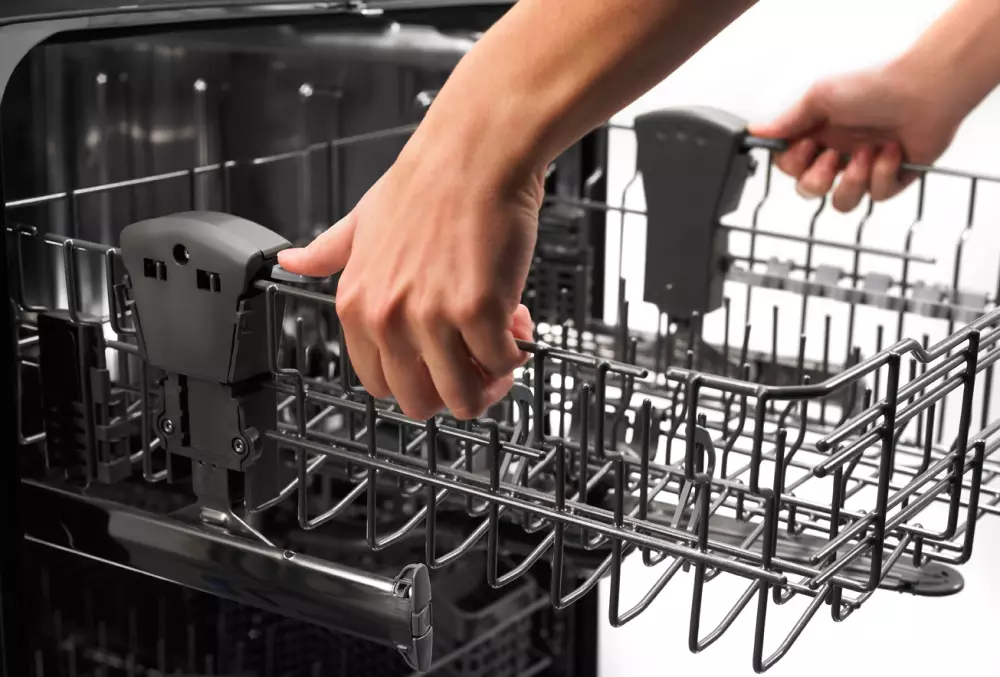How to Clean a Cutting Board Hygienically: Handy Guide to Keep Your Boards Clean and Germ-Free
It's no secret that cutting boards can get pretty nasty. You're cutting up raw meat, vegetables, and fruit on them all the time. And if you're not cleaning them properly or have a professional house cleaning service to do the task, they can become breeding grounds for bacteria and other nasties that can make you sick.
But fear not! We have some simple tips to help you keep your boards clean and germ-free so that you don't have to worry about harmful germs lingering on your board while you cook.
If you've ever wondered how to clean your wooden boards hygienically, you're not alone. After all, we all know that a clean kitchen is key to cooking well and keeping our families healthy.
But how do you keep your cutting boards clean without working too hard?
That's where we come in!
We've put together some handy tips for cleaning your wooden boards hygienically so that you can spend less time worrying about germs and more time enjoying the delicious meals you create with your family.
With these easy steps, you'll be amazed at how simple it is to keep your cutting boards clean!
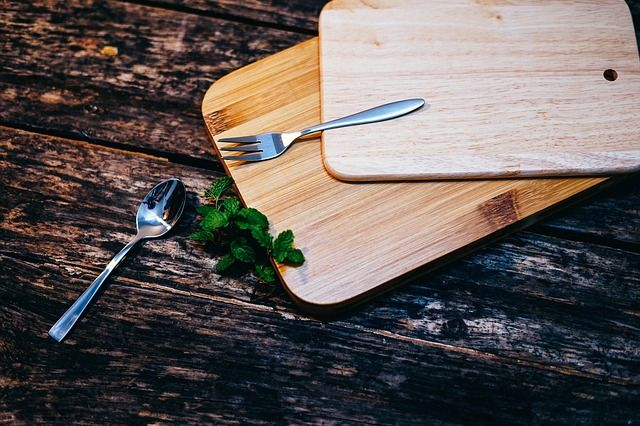
What You'll Need
Instructions
How to Clean a Wooden Cutting Board?
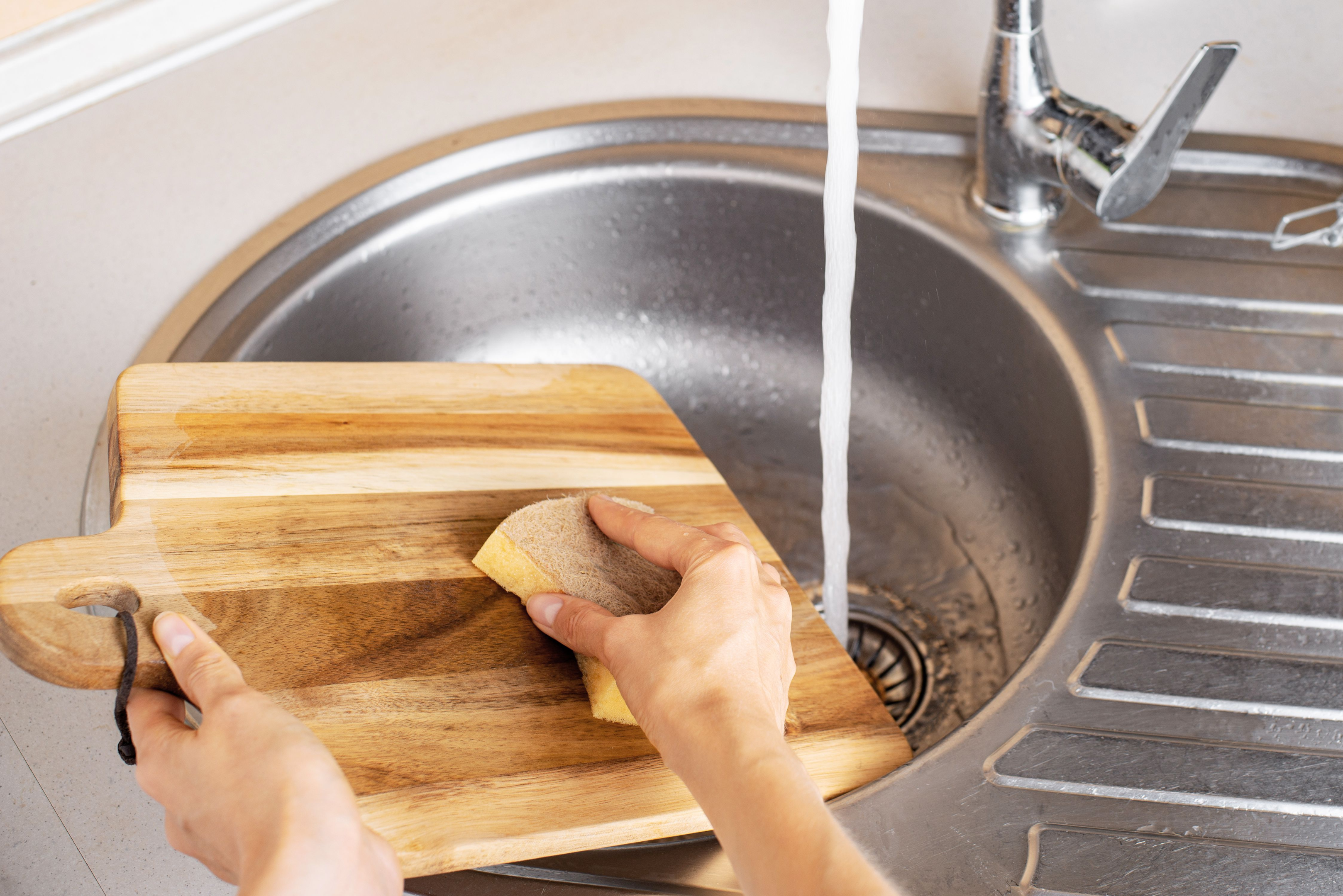
Whether you use an excellent wooden chopping board to prepare meals or as a serving platter, it may be the focal point of your kitchen. For a clean kitchen, knowing how to wash and clean wooden cutting boards and disinfect them after use is crucial.
1. Wash your chopping boards with dish soap
After removing any food remnants from the wooden cutting board, give it a hot water rinse. Use a dish sponge or dish brush to scrub after using dish soap. Scrub the wooden cutting board well if you see any knife marks, scratches, or irregularities because germs hide in the nooks and crevices of the wooden cutting board.
2. Remove the stains
Your best bet to remove the stains in your wooden chopping boards is to wash your board right after use, before the stain becomes too saturated into the wood. You can use a clean scrub sponge or fine-grit sandpaper to remove splotches from the chopping board. Just be careful to brush only a little or risk making a dent in your chopping board.
3. Clean both sides of the chopping board
Even if you only used one side of the wooden cutting board to cut on, be sure to thoroughly clean and scrub both sides of the board. Remember that the juices from the meat can leak and infect the opposite side. Make sure to wash the wooden cutting board's handle if there is one.
4. Spray white vinegar to remove odor
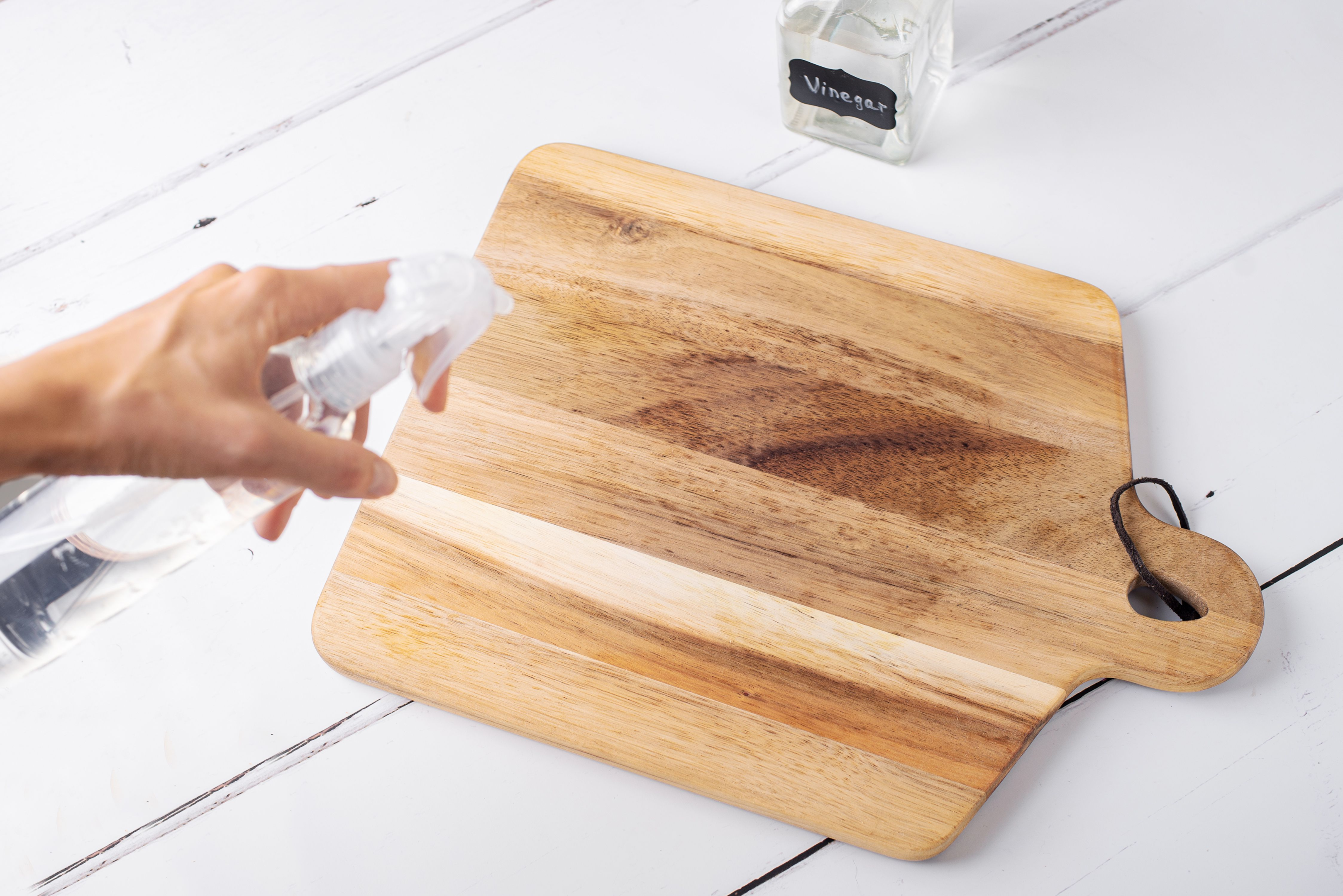
Food particles can become lodged and fester in cuts on chopping boards, especially older ones with many knicks and scrapes on the surface, making them smelly.
Applying white vinegar to your chopping boards will help to eliminate the foul odor. Fill a spray bottle with vinegar and spritz your chopping boards if the smell is mild to moderate. After letting the mixture sit for a few minutes, thoroughly wash the chopping boards with water.
You can submerge your entire chopping board in a sink or container of white vinegar if the odor is on the verge of being hazardous. Just a minute or two should be plenty to submerge it to avoid cracking the chopping boards. Then rinse the chopping board with water after the bath is finished.
5. Rinse the wooden cutting board and let it air dry
Warm water should be used to rinse the two sides of the wooden cutting board. After drying the chopping board with a clean cloth or paper towel, allow it to air dry completely before storing it.
Wooden cutting boards should be dried after cleaning to prevent the wood from splitting. Wood cracks are a breeding ground for bacteria and germs that can damage your kitchen.
6. Oil your chopping board regularly
Once a month or every two weeks, depending on how often you use your wooden board, oil your wood-cutting board to prevent cracking, dryness, and warping. Using a paper towel or clean cloth, apply cutting board oil, food-grade mineral oil, or highly-refined coconut oil on the wooden board.
Buff the oil in the board, covering every area completely. Wipe away any extra oil on the surface after letting the oil sink into the wooden board for a few hours or overnight.
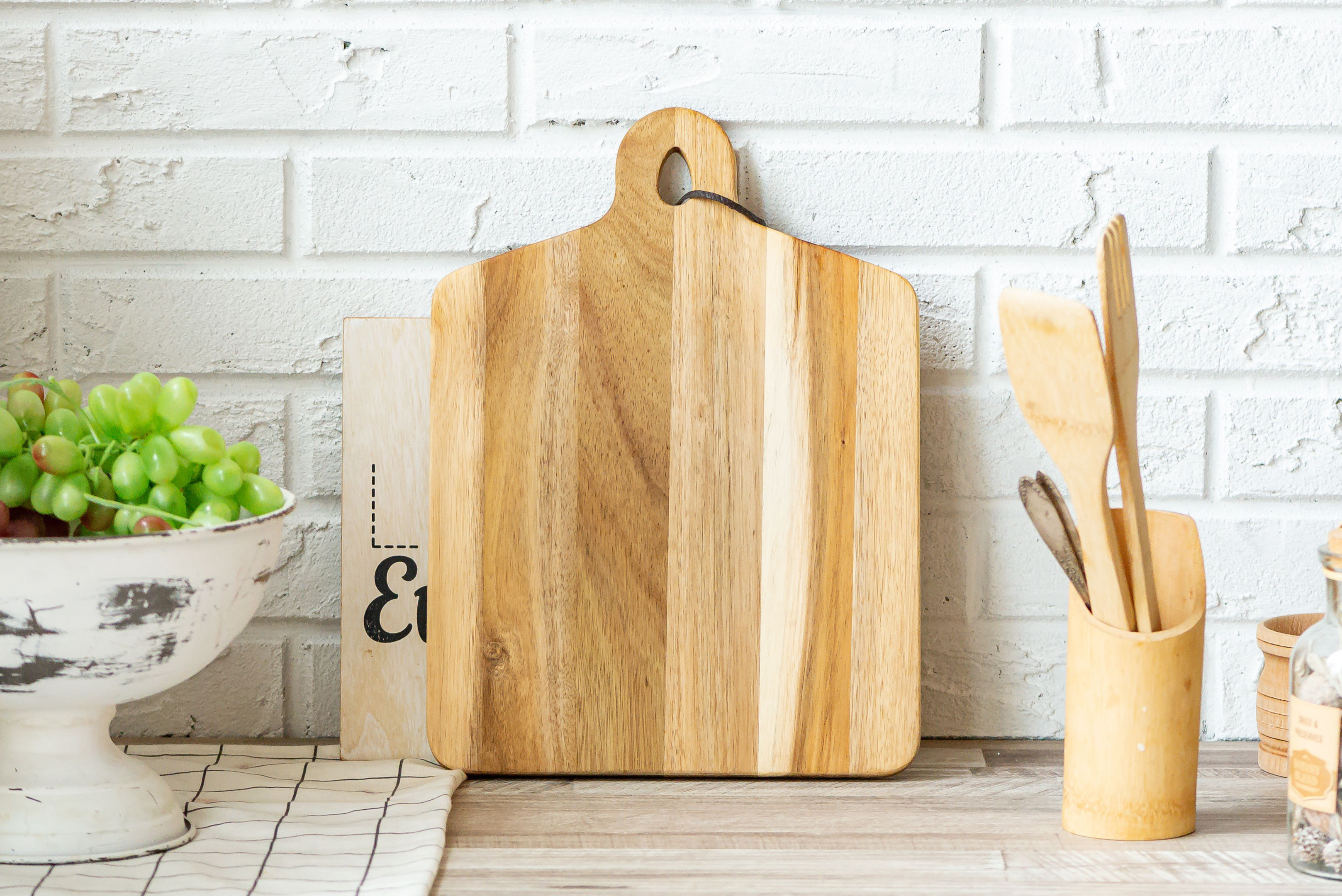
Maintain Your Sanitized Wooden Chopping Boards!
Now that you know how to clean a wooden cutting board hygienically, it's time to get out there and start cleaning to maintain your sanitized wooden chopping boards.
Remember, it's not just your stainless steel kitchen sink that needs to stay clean to avoid contamination. To keep foodborne illnesses at bay, you must sanitize all your equipment. That means your pots, pans, knives, and, yes, your wooden chopping boards.
You can keep your cutting boards clean and do it in a way that's safe for the environment and doesn't involve any chemicals that might harm your family or pets. Happy cutting!
If you are ready to clean the kitchen, we've got the ultimate kitchen cleaning guide to help keep your kitchen spotless.
FAQs
Do you need to sanitize a cutting board?
It would be best if you were sanitizing your cutting board. Not only will this keep those bacteria at bay, but it will also help keep your knife sharp and make sure that no one gets sick from touching their food with a knife and wooden board exposed to bacteria.
Are wooden cutting boards sanitary?
Wooden cutting boards offer an elegant and hygienic option for households. People usually opt to cut meat from plastic rather than wood. Still, plastic has less durability and is more likely to have knife indents that harbor bacterial spores if not thoroughly cleaned and treated correctly.
Wood cutting boards may require some elbow grease and attention to clean, but they perform better and can last long periods.
How often should cutting boards be sanitized?
Generally speaking, even if you only use your cutting board for fresh fruit, it's a good idea to clean and sanitize it after each usage. In addition, after using your wooden cutting board for a raw animal product such as meat, you should always clean and sanitize your board.
How often should wooden boards be replaced?
Replace any wooden boards that are broken, damaged, or exhibit severe wear right away. How frequently you replace your boards depends on how often you use them. If they are used frequently, or every day, they might need to be replaced every few months.
Weekly inspections of your boards are an excellent idea, especially during busy times. Kitchen wooden chopping boards will need to be replaced more frequently.
How can a wooden cutting board make people sick?
Foodborne infections can transfer from the food you're cooking to the cutting board whenever you use one. It doesn't matter what kind of food you're working with because all foods, including raw meat, lettuce, and apples, can harbor infections.
These viruses can multiply to deadly proportions on your cutting board if you frequently clean and sanitize your boards. Whenever you use your wooden board, germs can transfer to the meal you are preparing, making you and everyone else you serve ill.
